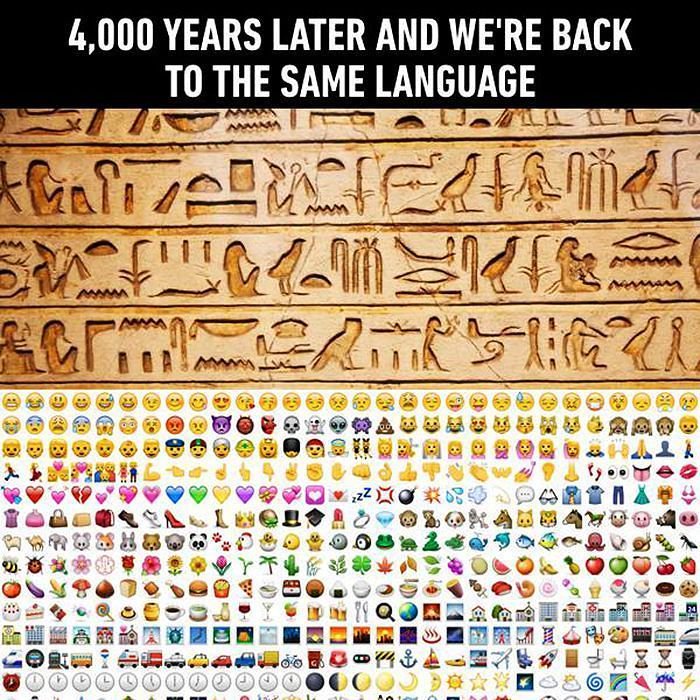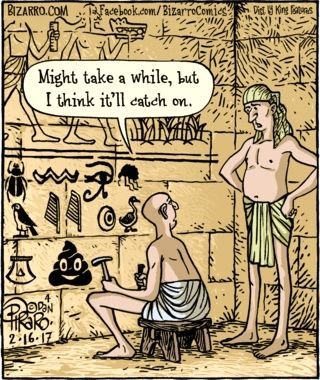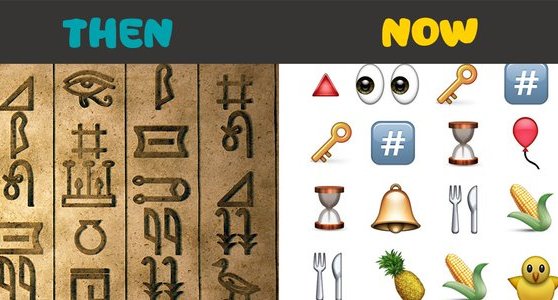With its poodles, noodles and happy poos, Emoji is now the fastest growing language in the world. What a huge step back for humanity. So it’s official. We are evolving backwards. Emoji, the visual system of communication that is incredibly popular online, is Britain’s fastest-growing language according to Professor Vyv Evans, a linguist at Bangor University.
The comparison he uses is telling – but not in the way the prof, who appears enthusiastic about emojis, presumably intends. “As a visual language emoji has already far eclipsed hieroglyphics, its ancient Egyptian precursor which took centuries to develop,” says Evans.
Perhaps that is because it is easier to go downhill than uphill. After millennia of painful improvement, from illiteracy to Shakespeare and beyond, humanity is rushing to throw it all away. We’re heading back to ancient Egyptian times, next stop the stone age, with a big yellow smiley grin on our faces.

Hieroglyphics are considered to be one of the oldest forms of written language, with the earliest known form dating back to 3300-3200BC. The term hieroglyphics was coined by the ancient Greeks to describe the ‘sacred carvings’ they observed on Egyptian monuments. In ancient Egyptian the word for hieroglyphics translates to mean ‘the word of the gods’, highlighting its importance in Egyptian culture.
Unlike emojis, which are used by more than 90% of the world’s online population, only a small percentage of Ancient Egyptians were taught how to write hieroglyphics, such as priests, royals and civil officials. Consequently, hieroglyphics were predominantly confined to religious texts, royal documents and the recording of historical events.

The use of emojis, then, can be compared to certain kinds of nonhuman animal communication, which generally has specific purposes. Bees are known to dance to inform the hive of the location of a food source, but the dance cannot express any other kind of information. Birdsong indicates location and conveys warnings and has a function in sexual selection, but the songs cannot express any other kind of information. This is not language in the human sense.

What do you think? If emojis are like hieroglyphics, does that mean we’re reverting back to the ancient ways of early society? Or do emojis help add clarity and understanding to a message that could otherwise be misinterpreted? We’d love to hear your opinion in the comments below!